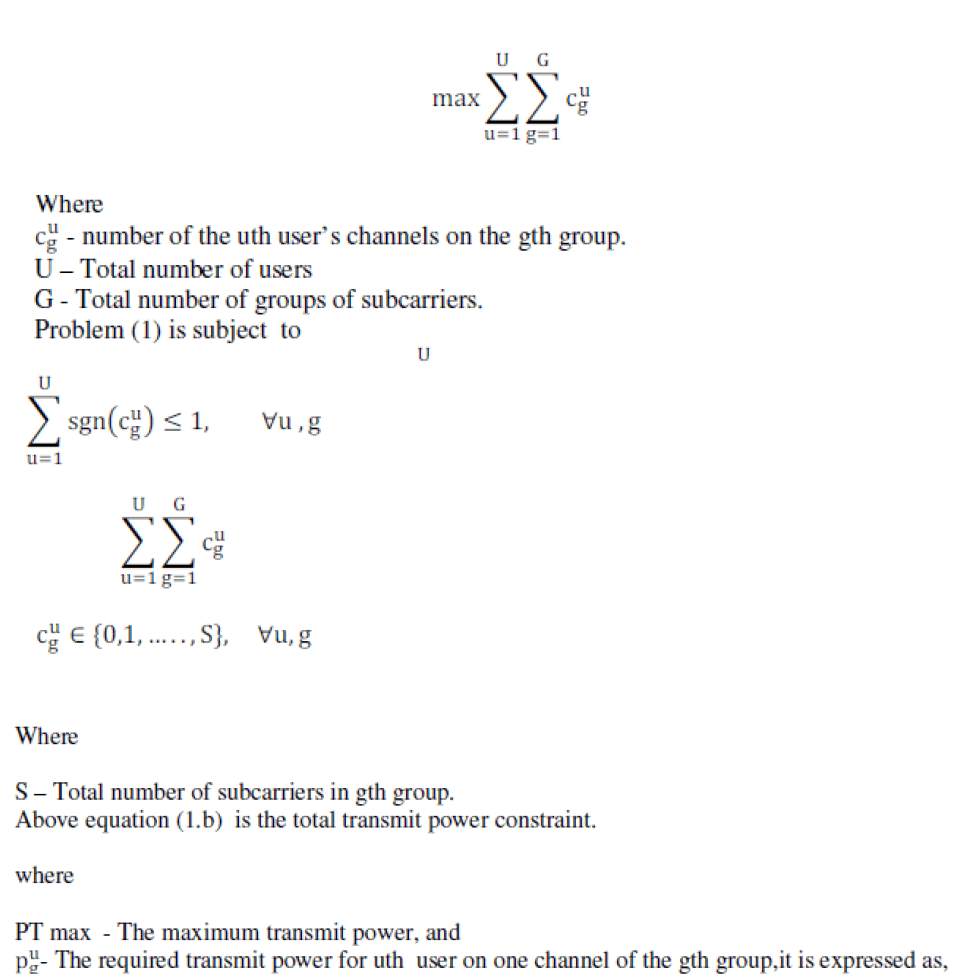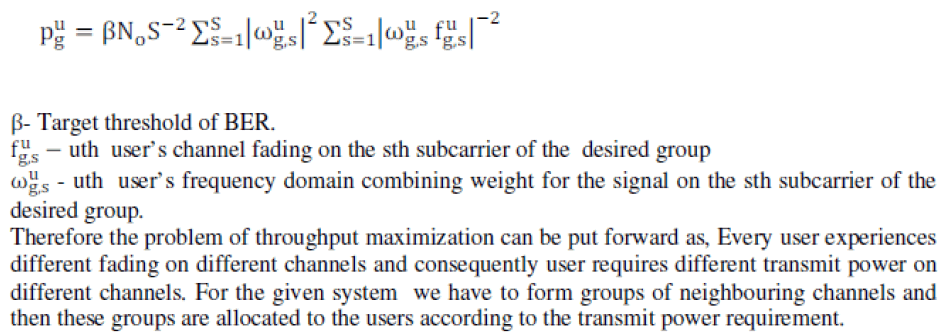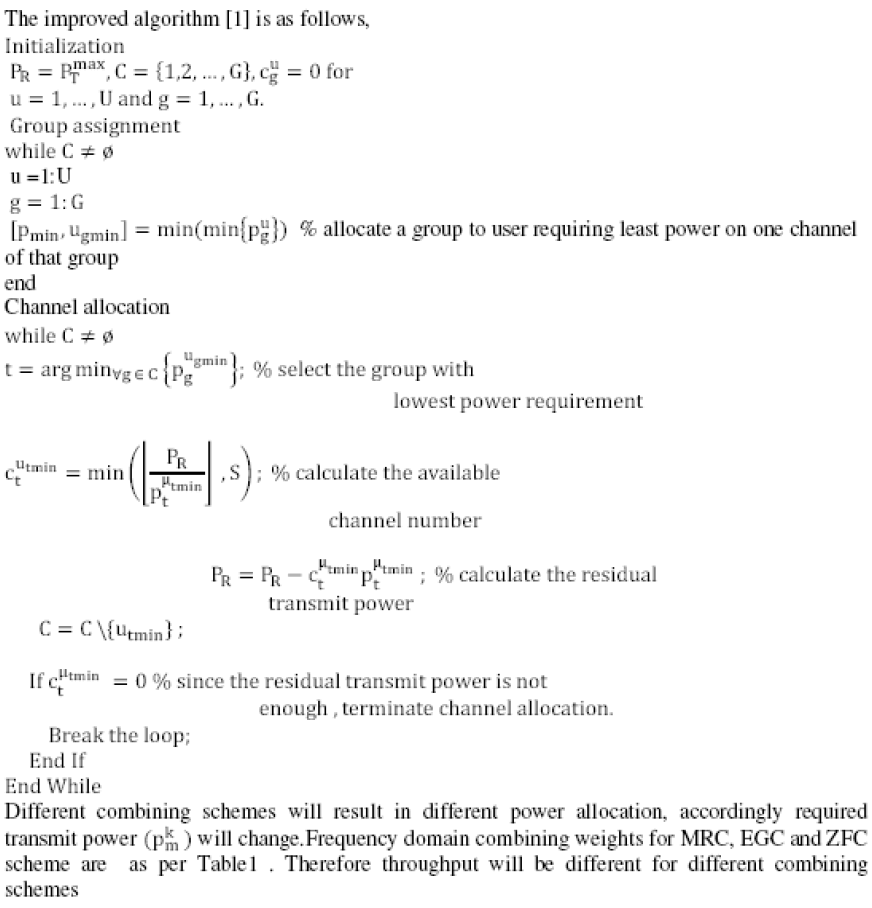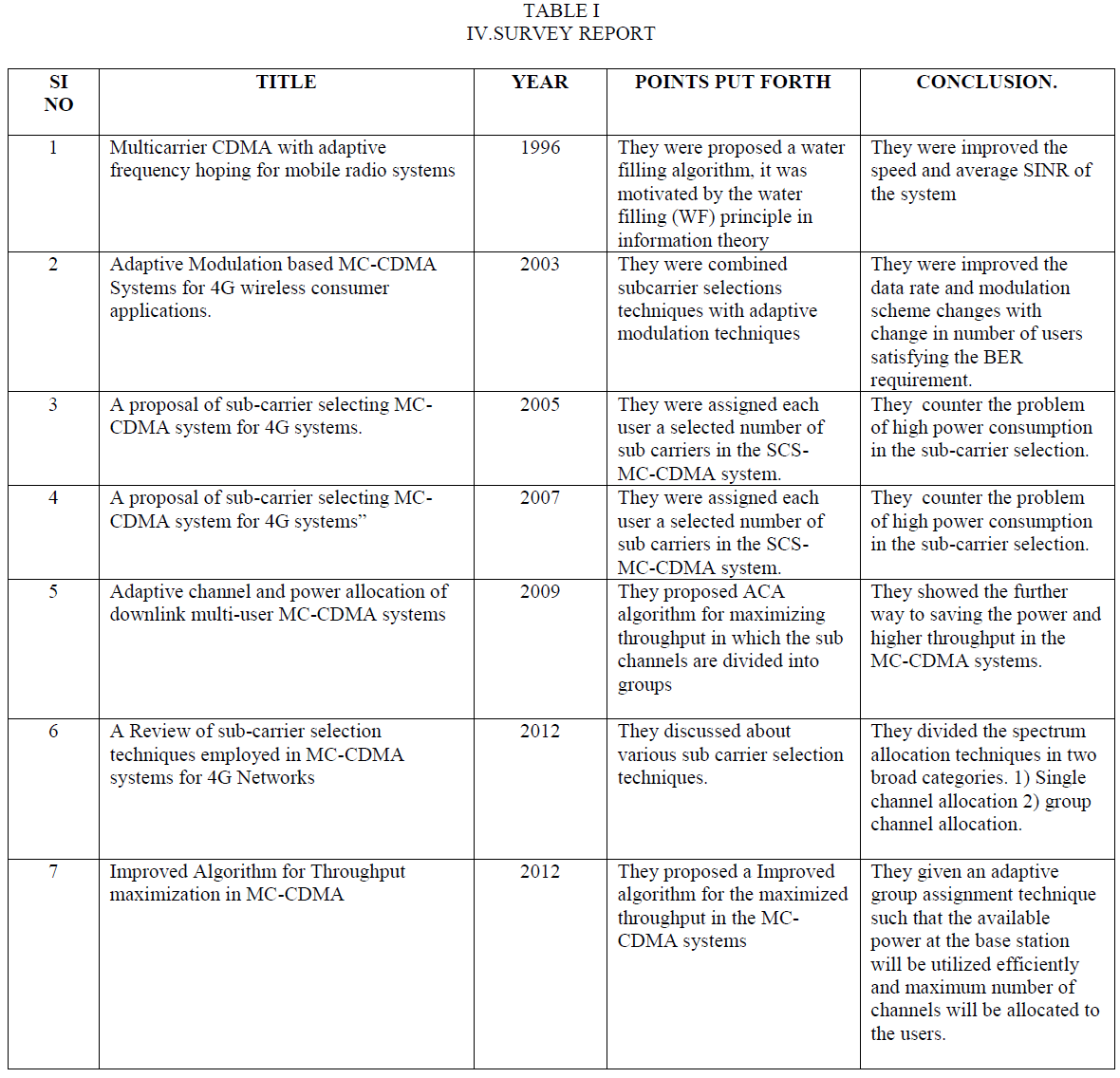ISSN ONLINE(2278-8875) PRINT (2320-3765)
ISSN ONLINE(2278-8875) PRINT (2320-3765)
G.Senthil Kumar1, N.C.A.Boovarahan2
|
| Related article at Pubmed, Scholar Google |
Visit for more related articles at International Journal of Advanced Research in Electrical, Electronics and Instrumentation Engineering
Efficient Channel allocation is one of the important problem in the latest generation mobile communication systems. A very high data rate is most wanted for the usage of multimedia and Internet, So in this paper surveys the performance of Adaptive Channel Allocation (ACA) algorithm and allocates the channels to users for high data rates in the downlink transmission of MC-CDMA systems. For the analysis autoregressive model of correlated Rayleigh fading processes is used. Performance of the ACA algorithm is evaluated with MRC,EGC,ZFC combining schemes.
Keywords |
| MC-CDMA, ACA,BER, THROUGHPUT. |
INTRODUCTION |
| In this paper spectrum allocation technique for MC-CDMA system is evaluated for the long time evolution and Rayleigh fading channel is used for the evaluation. The targets for downlink set to 1Gbit/s and uplink data rate requirements were set to 500Mbit/s. Previously throughput technique is maximized by improved algorithm [1]. Majorly channel fading is not same for different subcarriers so that feature has been developed for allocating the subcarriers to the users according to the instantaneous channel state information (CSI) in [1] and [2]. From the reference [2] ACA is proposed for maximizing throughput in which subchannels are divided into groups , these groups are allocated depending upon the user requirement. And in that paper channel fading feature is not fully developed. |
| In [3] other subcarrier selection techniques are discussed by dividing the spectrum allocation techniques by two ways that is single channel allocation and group channel allocation. In [5] selected number of sub carriers is assigned to each user. In this paper the concept is to assign each user only as many sub-carriers as are needed to support the user’s data rate. For addition of every filters for subcarrier selection the complexity of the system increases. Channel state information refers to amount of channel fading user experiences on particular channel. Some schemes have been proposed for sub carrier selection according to CSI which includes, selecting the sub carrier requiring least amount of transmit power on it. In this paper how to require least amount of transmit power is required for selecting a subcarrier is discussed. |
| For improvement in BER performance, high data throughput in a multi-cell environment, reducing the consume high power at the mobile terminal , and results in high spectrum efficiency these results must shown by an appropriate sub-carrier selection technique. |
| For the given power, throughput can be maximized by assigning maximum number of sub carriers to the users. The investigation method of sub channel allocation to the user for the given transmit power in the downlink transmission is done and from the CSI each user will require a different transmit power on each channel, using this characteristic group of channels will be allotted to users. In the existing method of group allocation to the users has been modified which will result in producing with ACA algorithm[2]. |
FORMULATION OF MAXIMIZING THROUGHPUT |
| Proper use of channels and transmit power to maximize the throughput. In the downlink transmission of multiuser MCCDMA technique for the given transmit power at the base station maximum possible number of channels should be allocated to the users to maximize throughput maintaining low BER. If the required amount of transmit power of each channel has been determined for all users before the channel allocation, then throughput maximization problem is given by a following |
| optimization of problem as [2], |
 |
 |
SUB CHANNEL SELECTION ALGORITHM |
| An improved algorithm is proposed in [7] for the channel allocation in the downlink transmission of multi-user MCCDMA systems for throughput maximization, under the constraints that the total transmit power should not exceed the maximum transmit power and each channel’s SINR should not be less than a pre-defined value. |
| In this algorithm a sub channel group assignment technique is suggested as follows, |
| 3.1 Criteria used for group allocation |
| In this scheme, the group of sub channels are allocated to the different users by, |
| 1) Calculating required transmit power for the users on one channel of all groups. |
| 2) While allocating groups to the users, all the G number of groups will scan all the U number of users at the same time and the user requiring minimum transit power calculated as per improved algorithm allocated that group. |
| 3) Next remaining(G-1) number of groups will scan all the remaining (U-1) number of users and so on…… |
 |
 |
CONCLUSION |
| In this paper the evaluation of the performance of the improved algorithm for sub carrier allocation is done. Rayleigh fading channel model is considered. The proposed algorithm suggest an adaptive group assignment technique that will result in the optimum utilization of the available transmit power at the base station for allocating maximum number of channels to the users. The further improvement in the throughput is one of the emerging fields paving the way to more researches. |
References |
|